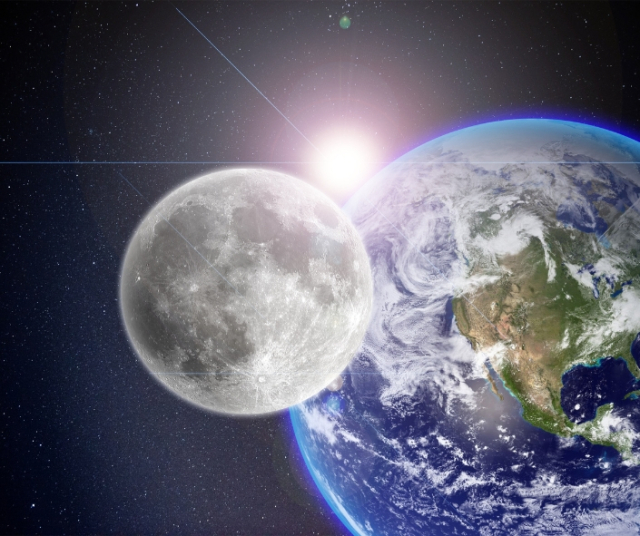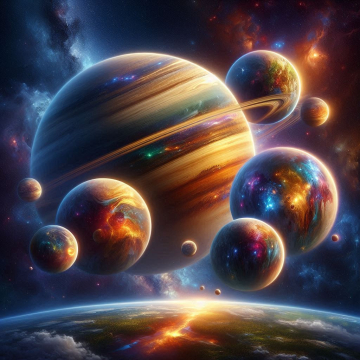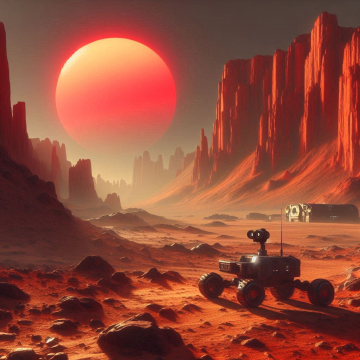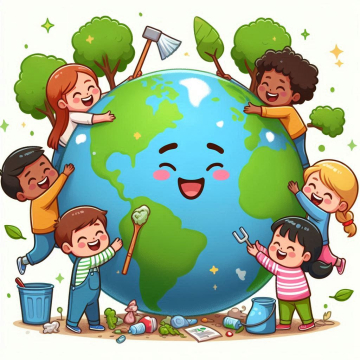The Moon, our only natural satellite, has been a constant source of wonder and mystery throughout human history. Its presence in the sky has not only inspired mythologies and poetry, but it also plays an essential role in a variety of aspects that directly affect life on Earth. By further exploring the role of the Moon, from its gravitational effects to its influence on culture and science, layers of complexity emerge that highlight its importance in the very fabric of our existence.
Gravitational Influence:
The gravitational connection between the Moon and Earth is a powerful phenomenon that manifests itself through the tides. The gravitational pull of the Moon, along with that of the Sun, creates ocean tides. This constant movement of waters not only has an impact on marine ecology, but also influences ocean currents, thus affecting global weather patterns.
Lunar Cycle and Life on Earth:
The lunar cycle, with its changing phases, has left a deep mark on life on Earth. Since ancient times, cultures have observed and recorded lunar patterns, and some aspects of daily life, such as agricultural practices and the reproductive behaviors of certain animals, have been linked to the phases of the Moon. The biology of some species, including insects and mammals, has evolved in tune with these cycles.
Stabilization of the Axis of Rotation:
The Moon's role in stabilizing the Earth's axis of rotation is essential to maintaining relatively stable climatic conditions. This stability contributes significantly to the habitability of the planet, regulating the seasons and providing an environment conducive to life as we know it.
Three Body Effect:
The stabilization of the Earth's axis of rotation occurs through the phenomenon known as the three-body effect, which involves the Earth, the Moon and the Sun. As the Earth rotates on its axis, the Moon and the Sun exert opposing gravitational forces at the Earth's poles, creating a stabilizing effect. This interaction reduces extreme oscillations in the Earth's axis of rotation and helps maintain a relatively stable climate.
Impact on Habitability:
Stabilizing the axis of rotation is essential for the habitability of the Earth. By maintaining a relatively constant tilt, the Earth experiences predictable seasons that allow organisms to adapt to consistent weather patterns. This has been crucial for the development and evolution of life on our planet.
Long Term Changes:
Although stabilization of the rotation axis is a phenomenon that operates on geological time scales, its effects are fundamental to the long-term sustainability of life on Earth. The stability provided by the interaction between the Earth and the Moon has allowed the continued evolution of life in a relatively constant environment.
Contributions to Science:
The scientific study of the Moon has been fundamental to our understanding of the solar system and the evolution of Earth. Missions like the Apollo program not only brought humans to the Moon, but also provided crucial data about its composition and origin. The Moon acts as a silent witness to the early geological history of our solar system.
Geological Records:
The Moon is an invaluable geological witness to the early events of the solar system and the formation of the Earth. Lacking a significant atmosphere and active geological processes, the Moon preserves nearly intact geological records of asteroid and comet impacts that occurred in the early stages of our solar system. Studying these records has allowed scientists to reconstruct the early history of our cosmic neighborhood.
Surface Composition:
Lunar missions, both robotic and manned, have collected detailed data on the chemical and mineralogical composition of the Moon. These data have revealed the presence of various minerals, including basalts and anorthosites, which have shed light on geological processes and the formation of the Moon. In addition, the Moon has been a key source for understanding the composition of other celestial bodies.
Development of Space Technologies:
The Moon has also been a vital testing ground for the development of space technologies. From rocket design and deployment to landing systems and spacewalks, lunar missions have driven innovation and laid the foundation for future space exploration, including missions to Mars and beyond.
Space exploration:
The Moon has served as an essential springboard for space exploration. Robotic and human missions have used the Moon as a launch base, taking advantage of its gravity to perform more efficient maneuvers in the search for knowledge about our solar system and beyond. Future projects, such as the construction of lunar bases, promise to expand our human presence in space.
Effects on Night Lighting:
Moonlight has been a source of nighttime illumination throughout history. In rural areas, moonlight can provide sufficient visibility for nighttime activities, while in urban environments, moonlight can compete with or complement artificial lighting, affecting the way we experience the night landscape.
The Role of the Moon in Mythology and Popular Beliefs:
From stories of transformation on full moon nights to superstitions about the Moon's effects on human behavior, its presence remains an inexhaustible source of cultural narratives and artistic expressions.
The Moon is not only an astronomical entity; It is a cultural symbol rooted in the mythologies of various civilizations. The Moon has been worshiped as a deity in many cultures, and its cycles have been associated with rituals, festivities and spiritual beliefs. From the Greek goddess Selene to the myths of Native Americans, the Moon has been an inexhaustible cultural muse.
The Moon, in all its magnificence, emerges as a multifaceted player in the cosmic work of Earth. Its influence ranges from the way we experience weather and climate to the way we understand our own history and origin. The Moon, ultimately, is not only a celestial object; It is an ancient and constant witness to our journey through the cosmos. Exploring its multifaceted role allows us to appreciate the depth of its impact on our daily lives, our culture, and our knowledge of the vast universe we call home.






